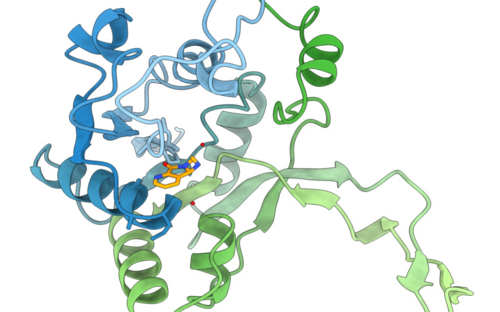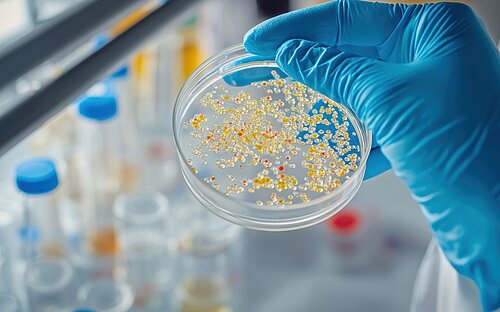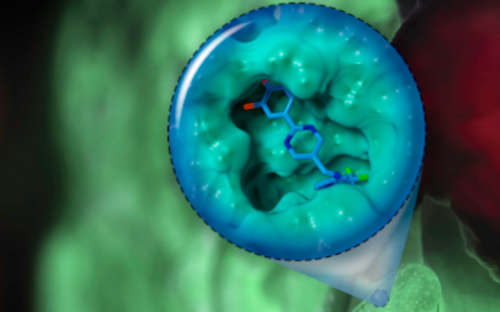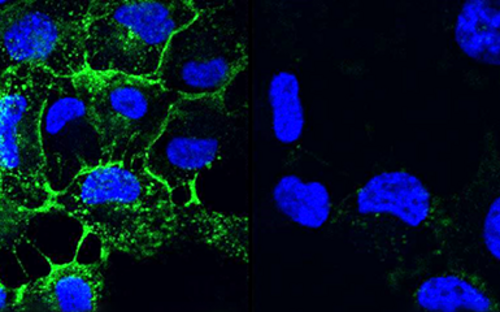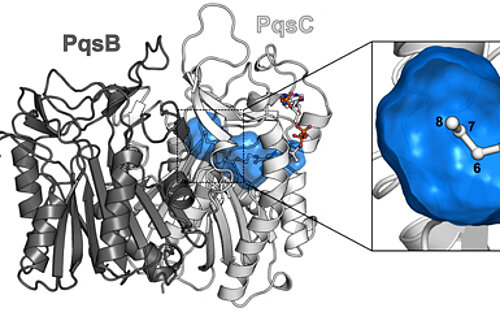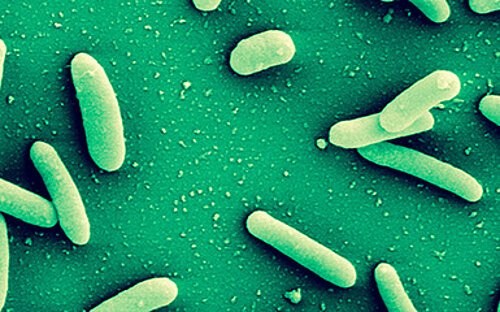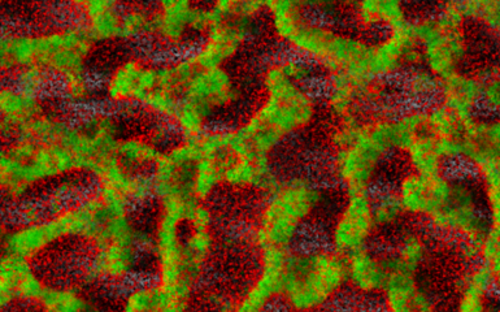Pseudomonas aeruginosa – a biofilm specialist
The widely dispersed bacterial rod Pseudomonas aeruginosa has a preference for colonising bodies of water and soil. The germ is frugal, robust, tenacious – to survive, it requires little more than some humidity and is even able to outlast immersion in disinfectants.
The widely dispersed bacterial rod Pseudomonas aeruginosa has a preference for colonising bodies of water and soil. The germ is frugal, robust, tenacious – to survive, it requires little more than some humidity and is even able to outlast immersion in disinfectants. Pseudomonas aeruginosa is the much-feared culprit behind nosocomial infections – those contracted during a stay at the hospital, which can be quite serious and even deadly. In addition, the pathogen is frequently discovered in burn victims or in the lungs of cystic fibrosis patients. These kinds of infections are especially difficult to treat and may even turn chronic.
The reason behind the pathogen’s tenacity: The bacterium comes with a number of built-in defense mechanisms that make it insensitive to many common antibiotics. As an metabolism artist, Pseudomonas aeruginosa is capable of inactivating antibiotic substances, for example, by breaking down the drugs’ molecular structures into medically ineffective parts. Another strategy often used by Pseudomonas germs during chronic colonisation is “concealment.“ With the help of a self-made thick layer of slime, which coats the germs, the bacterium successfully shields itself from antibiotics. In addition, the biofilm allows the pathogen to evade detection by the human immune system.
Headed by Susanne Häußler, HZI’s Department of Molecular Bacteriology is concerned with the study of the molecular mechanisms underlying Pseudomonas aeruginosa’s antibiotic resistance and its formation of biofilm structures. In the departmental research labs, scientists are hard at work examining the ways in which bacteria communicate with each other during biofilm formation. The researchers’ goal is to interfere with bacterial communication in order to prevent biofilm formation. In addition, development of a molecular testing system is aimed at helping with detection of antibiotic resistances with the goal of designing effective therapeutic approaches to fighting Pseudomonas infections.
Involved research groups
-
Chemical Biology of Carbohydrates
 Prof Dr Alexander Titz
Prof Dr Alexander Titz -
Dynamics of Respiratory Infections
 Prof Dr med. Hortense Slevogt
Prof Dr med. Hortense Slevogt -
Microbial Proteomics
 Prof Dr Susanne Engelmann
Prof Dr Susanne Engelmann -
Molecular Bacteriology
 Prof Dr Susanne Häußler
Prof Dr Susanne Häußler -
Structure and Function of Proteins
 Prof Dr Wulf Blankenfeldt
Prof Dr Wulf Blankenfeldt -
Drug Design and Optimization
 Prof Dr Anna K. H. Hirsch
Prof Dr Anna K. H. Hirsch

![[Translate to English:] 3D-kontrastierte Oberflächenstruktur von LasB (beige) mit einem Inhibitor der 3. Generation (dunkelblau), der Zink (grau) bindet.](/fileadmin/_processed_/8/b/csm_LasB_Foto_9cb0b6a1c3.png)

